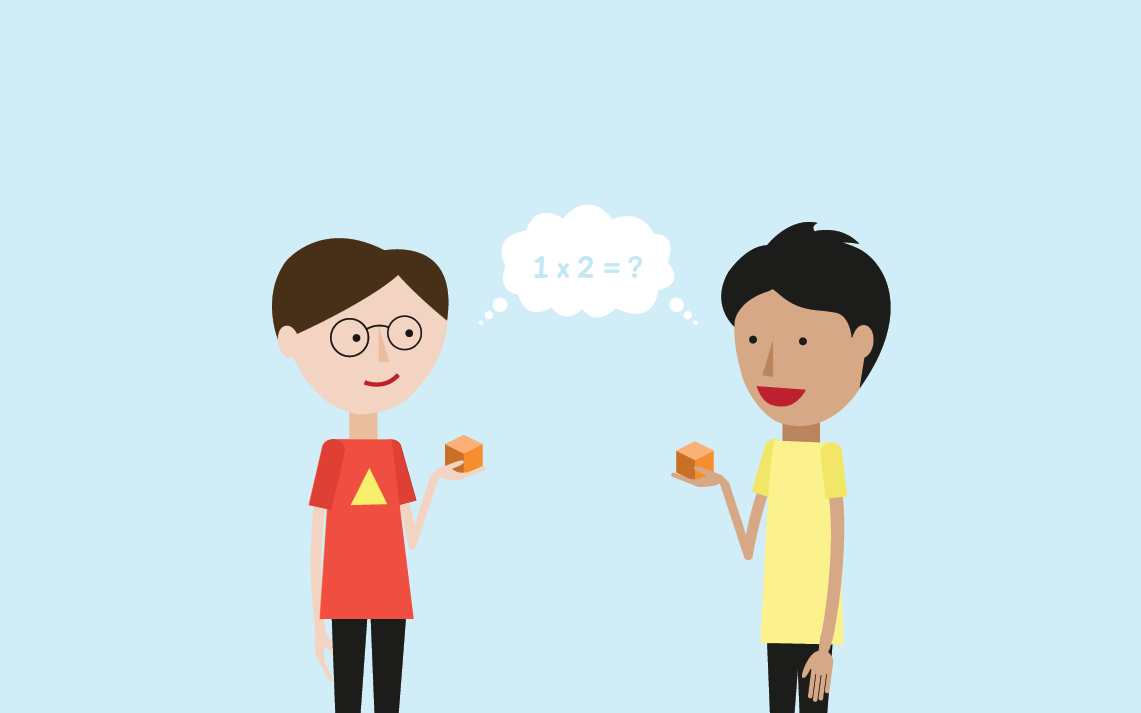Choose your words and your manipulatives carefully — two keys for maths success.
It would be an understatement to say the last two years have been a challenge. While teachers have remained agile as they have adapted to difficult circumstances, it is likely that our NQT and ECT colleagues have not had the same learning and training opportunities as in the past.
This blog is meant to give these colleagues some support and advice for helping determine what is really important in maths lessons. At Sandringham Primary School, two elements that have made a big difference for our pupils’ maths success are:
Talk
Oracy plays a huge role in curriculum and mathematics is certainly no exception. Neil Mercer has talked about the natural role of communication and discussion in maths problem-solving. It isn’t something that should be done in isolation; it should involve the opportunity for high-quality talk. Vygotsky (1986) argued that children learn best through interaction and communication with peers and adults. He further explained that children develop thinking skills based on the relationship between social interaction and individual thinking — both aspects are crucial. He also noted that because we are social creatures we need to use talk to internalise our own thoughts — it should be the golden thread running through the maths lesson. So if you want your children to learn from each other as well as have the opportunity to “try out their thinking aloud” then get them talking!
But as much as the process of talk is important, so too is the quality of the talk. As a teacher, you must demonstrate and model high expectations for children with regard to the language you use in the classroom. Claire Lee (1998) has talked about how children will see themselves as mathematicians if they can communicate their ideas, concepts and skills.
So how do we help pupils do that? One way is to put emphasis on the written and spoken language. For instance, instead of posing the calculation “12 plus four equals what”, have learners talk with their partner and ask “together, how many problems can you come up with for this question?”
The way teachers articulate the intended learning plays a vital role. Are you using the correct mathematical language? Are we asking our children to respond using the correct mathematical language?


Think about how your learners articulate their thinking with each other and the adults in the classroom. Are pupils speaking in full sentences? As Doug Lemov (2010) has noted, this pedagogy is important. When children are encouraged to respond and answer in full sentences they hear themselves as mathematicians and they will practice mathematical vocabulary.
Teacher: 3 multiplied by 5 would equal?
Child: The product of 3 and 5 is 15.
You may need a prompt like a sentence stem to remind your pupils.
Become Qualified to Make a Difference
Empower yourself to create a lasting impact in pupils’ lives. Gain maths mastery certificates that will represent all you’ve accomplished and learned in your teaching journey.
From Fellow, to Expert, to Master — you can take the pathway to certified success!

Manipulatives
The use of manipulatives can make or break a pupil’s success. We are all familiar with the work of Bruner (2000): Enactive-Iconic-Symbolic which has since become Concrete-Pictorial-Abstract. But, are we aware of the possible dangers of using manipulatives to support learning? There are three things to consider:
1. The use of proportional and non-proportional manipulatives (Van de Walle et al 2009)
Nobody would deny that using manipulatives is an essential first step in helping children with mathematical understanding and concept-building. But it is crucial that the manipulative you use is appropriate to the child’s level of understanding. Let’s take the place value disk as an example. Certainly it’s a useful manipulative — and one we use at school a lot — but it is still quite an abstract resource. The size of the discs isn’t representative of its amount, as you can see in this chart — the discs are the same size.

This isn’t much use to a year 2 child who is just grappling with their understanding of place value. Instead, consider making bundles of ten using straws or lolly sticks, which would be much more user-friendly and relevant for this age group.
2. Is the manipulative appropriate to the task?
Asking children to use manipulatives in order to support their learning doesn’t necessarily make the maths easier for them. You need to model how the manipulative is used if it is going to encourage deeper understanding. And, if a child is using a manipulative that isn’t conducive to the task at hand, it will not help with knowledge or understanding. In fact, quite the opposite. Misconceptions are easily formed and very difficult to eliminate.
3. Don’t let a child become reliant on the manipulative.
Some children will need to use manipulatives to learn for longer than others which is fine. Ultimately, however, when they’re ready, children should move away from manipulatives and work towards the abstract. You can do this with the use of a pictorial representation alongside the manipulative.
As a new teacher, using high-quality talk and the appropriate manipulatives will put you one step ahead with your maths lessons.
